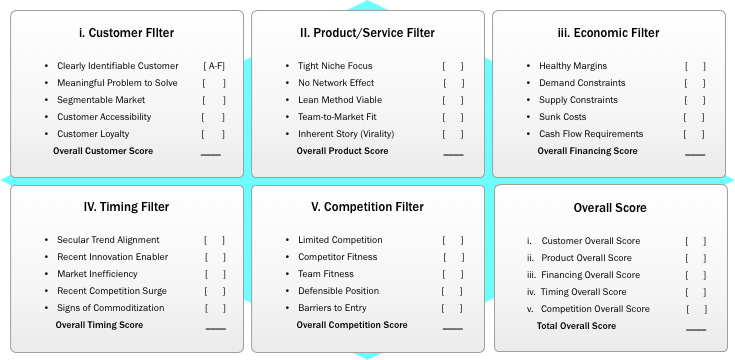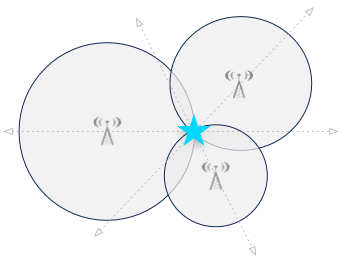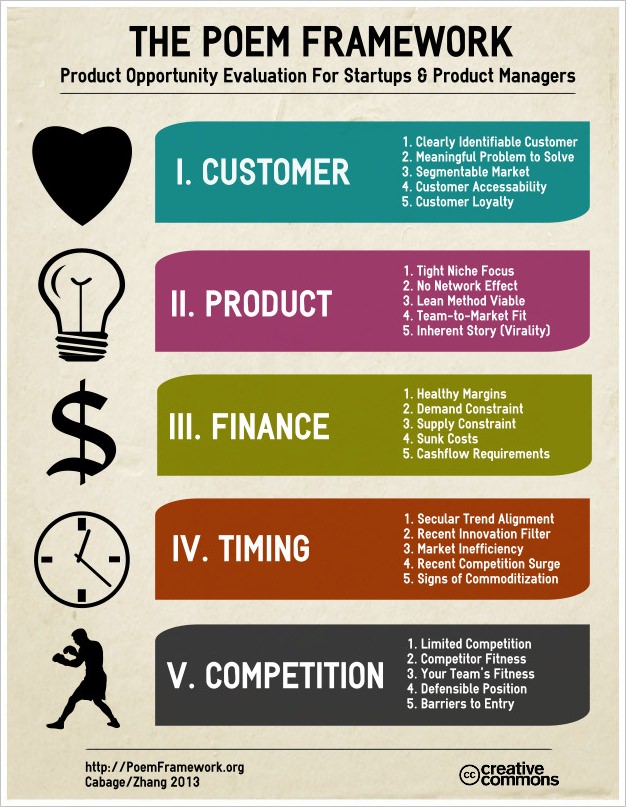 How do you know whether a product idea is going to succeed if you build it and take it to market? If you’ve ever been part of a startup, or if your organization has launched a new line of products, you know how precarious the effort can be.
How do you know whether a product idea is going to succeed if you build it and take it to market? If you’ve ever been part of a startup, or if your organization has launched a new line of products, you know how precarious the effort can be.
Some would advocate using the ‘Lean’ method to arrive at a product market fit. The basic premise is to seek input from customers early in the process to ensure you are building a product people actually want. This allows you to challenge your assumptions and go see for yourself what the problems are you purport to solve.
While there is a lot of validity to this approach if you have identified a viable market and are merely seeking product-market fit, it may not be the best tool for discovering market opportunity. Lean is a great approach to optimization, but it does not help you determine risks or propensity for success when evaluating a brand new product or market concept.
One of the biggest challenges faced with new product innovation is the lack of heuristic models or best practices for discovering product opportunity. This is partly because the market is dynamic and it is difficult to pin down anything truly actionable before the opportunity has changed. But it is also because no heuristic models (set of best practices) has really been defined.
That is the challenge that led to the creation of the ‘product opportunity evaluation matrix’ or POEM framework. It is a conceptual framework that accounts for fundamental market dynamics in order to help startup entrepreneurs and product managers to think through the conditions of the market, to determine if an idea is likely to be successful or not. It can be used to identify strengths and weaknesses for an individual idea or to compare overall strength of several ideas to determine which opportunities are most likely to bring success. By taking this approach, one can take a more informed approach to determining whether to build a new product in the first place, rather than building it, hoping customers show up, and iterating and ‘pivoting’ repeatedly until they do.
The framework is comprised of five forces that drive market opportunity:
- Customer
- Product
- Timing
- Competition
- Finance
Five generally accepted truths are stated for each of the five forces and the practitioner is asked to grade their product concept (A-F) for each of the five truisms. An averaged score is then derived for each of the five forces. By going through this exercise, the practitioner is required to account for all of the significant dynamics that may determine the propensity of a product to succeed in the market.

To illustrate how this is useful, consider the metaphor of how cell phone service providers detect location of a device. Each cell tower can detect an approximate distance of a cellular device from the tower, but can only determine a radius around the tower. Adding a second toward provides directionality and by the time you add a third, you have the basis by which to triangulate a location with a fair degree of confidence.

It is a similar concept in that opportunities in a dynamic market are always moving and changing, and you need a few points from which to reaffirm where opportunities might currently be. Doing a reasonable evaluation of externally facing factors such as customer, timing and competition will tell you where opportunities are. And by looking at internally determined considerations such as what product you are proposing and your financial means to provide this product to the market (at this time in the maturity cycle), will give you a much stronger understanding of where the best opportunities are for you or your company to pursue.
The purpose and application of the POEM framework is similar to other open source conceptual frameworks such as SWOT and The Business Model Canvas. In the case of SWOT the practitioner loosely define the strengths, weaknesses, opportunities and threats they face in their current market, relative to their competition. This is helpful for strategic planning within an organization. Alexander Osterwalder’s Business Model Canvas, meanwhile, has become a popular tool for defining key elements of a business such as partners customer segments, and applicable channels. With POEM, the purpose is similar, but its application is to provide structure and guidance to the discovery of new product opportunities in the market.

The POEM Framework is a free-to-use open source resource that has been published under the Creative Commons license. To learn more, please visit POEMFramework.org. There you will find a detailed explanation of each of the criteria and how to use them. You can also take an interactive quiz for an easy and fun way to try applying the framework for the first time.







Comments 7